I am glad to acknowledge a note that a reader from Florida sent me bringing to my attention the fact that the first thanksgiving in the territory that today is the United States was not the one I featured in an article on this website several years ago. It actually took place in Florida five years before.
Thus, the first American Thanksgiving was neither at Plymouth Rock in 1621 nor in Texas on April 20, 1568 when Don Juan de Oñate crossed the Rio Grande and took formal possession of present day El Paso. This honor belongs to the city of St. Augustine, Florida, the first and oldest city of our present day United States. The landing of Captain General Pedro Menendez de Aviles and his fleet of soldiers and colonists – accompanied by priests – on the coast of Florida on September 8, 1565 has all the qualification to count it as the first official Thanksgiving Day in our country:

The land was claimed for Spain and
a Mass of thanksgiving was said |
• In an official ceremony Don Pedro Menendez came ashore amid the sounding of trumpets, artillery salutes and the firing of cannons to claim the land for King Philip II and Spain. One of the priests, Fr. Francisco Lopez de Mendoza Grajales, who had gone ashore the previous day, advanced to meet him, chanting the Te Deum Laudamus and carrying a cross which Menendez and those with him reverently kissed. Then the 500 soldiers, 200 sailors and 100 families and artisans, along with the Timucuan Indians from the nearby village of Seloy, gathered at a makeshift altar, and a Mass in honor of the Nativity of the Virgin Mary was said.
• The Mass was followed by a feast shared by the Spanish and the Timucuan Indians. The Timucuans brought wild turkey, venison, oysters and giant clams, as well as maize, beans, squash, nuts and fruits. The Spaniards contribution was cocido, a stew made with pork, garbanzo beans and onions, along with biscuits, olive oil and red wine.
In his well-researched book on the State of Florida titled Cross in the Sand, Dr. Michael Gannon duly affirmed that this Mass and feast was “the first community act of religion and thanksgiving in the first permanent European settlement in the land.” (1) Properly speaking, the history books should acknowledge this feast as the first Thanksgiving. But, as the saying goes, the victors write the history. So, for many years, the textbooks only placed emphasis on the English settlement in Plymouth, ignoring the fact that the Spanish were here long before them.
I believe two positive factors are beginning to change that picture. First, many traditional Catholics – like most of the readers of this website – are interested in learning more about their Catholic roots in America, and want to know disregarded episodes like this one. Second, the growing Hispanic population in our country – and particularly the States of Florida, Texas and the Southwest – is sparking interest in the nation's Spanish heritage.
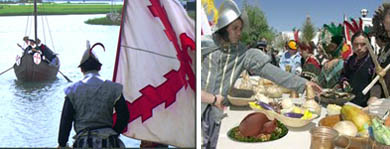
An annual reenactment of the founding of St. Augustine includes the thanksgiving feast |
Local celebrations like these are helping to make the people of Florida aware of St. Augustine’s rich past - which includes a Catholic Thanksgiving that long preceded the one celebrated by the Puritans.
The Huguenot threat
After Juan Ponce de Leon discovered the peninsula in 1513, named it La Florida (covered with flowers) and claimed it for Spain, the Spanish Crown made six attempts to establish a mission colony there. None were successful. Fierce storms at sea, starvation, hostile Indians and every genre of misfortune ended each expedition in failure.
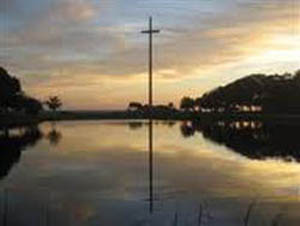
Today a 200-foot high cross marks the landing site at Nombre de Dios Mission |
This was a time of violent religious wars between the Huguenots and Catholics in France, with the Spanish Crown supporting the Catholics. The chief of the Huguenot faction was Admiral Gaspard de Coligny, who was looking for a colony in the New World to have a secure place to send his fellow-Protestants persecuted in France. In 1555, he had organized an expedition of 500 colonists who landed in Brazil on an island in the Rio de Janeiro bay. Their fort, however, was destroyed by the Portuguese in 1560. The Huguenots remained in Rio for some time until 1567, when they were definitively expelled in a battle with the Portuguese navy.
After this first defeat in Brazil, Coligny turned his eyes toward the coastline of peninsular Florida. In 1564 he sent out another expedition of Huguenot soldiers and settlers to establish an outpost called Fort Caroline. The French colony there represented a serious threat to Spanish shipping and the safety of the Indies. Not only would Spanish ships traveling with gold from the New World to the Old through the Bahama Channel be exposed to seizure by the French, but even the coastal towns could be attacked at any time. Further, the Catholic Spanish King wanted to avoid heresy spreading in the New World.
When news leaked to the Spanish court that a French fleet led by the sea Captain Jean Ribault was setting out to reinforce the struggling colony with ships, arms and food, Philip II’s reaction was swift. This was foreign encroachment on Spain’s claims in Florida – recognized in a 1559 Treaty with France. A Spanish fleet must be dispatched to stop Jean Ribault, destroy Fort Caroline, secure Florida for Spain and finally establish a permanent Catholic community along the coast of Florida.
The Menendez expedition
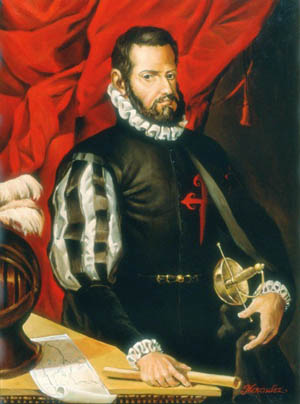
A portrait of Pedro Menendez Aviles |
After a failed attempt to cross the sea because of bad weather, Menendez set sail from Puerto Rico for La Florida with five vessels and 800 soldiers, artisans and settlers, and four secular priests on August 5, 1565. His flagship bore the proud name San Pelayo, a tribute to the warrior who started the Reconquista in Spain.
Thirty-four days later, under his command the Catholic colony of St. Augustine was founded – so named because land was sighted on August 28, the feast day of St. Augustine. On September 20, Menendez and 500 of his soldiers marched on Fort Caroline, captured it and renamed it San Mateo – St. Matthew. (2)
That month, Menendez sent a letter to the King reporting the progress of the expedition. After dealing with practical matters, he affirmed his content to see the Holy Faith established in the new land: “Let Your Majesty rest assured that if I had a million more, I would spend it all upon this undertaking, because it is of such great service to God Our Lord, and for the increase of our Holy Catholic Faith and the service of Your Majesty. And therefore I have offered to Our Lord, that all that I shall find, win and acquire, in this world shall be for the planting of the Gospel in this land, and the enlightenment of its natives, and thus I pledge myself to Your Majesty."(3)
Once again, Admiral Coligny’s plan to establish a haven for the French Huguenots had failed. Instead of becoming the refuge for the 40,000 French Huguenots that France wanted to rid herself of, (4) Florida became Catholic. Around its corner was the Age of the Missions that would only end a century later in 1675.1. Cross in the Sand, University of Florida, 1993, 3rd ed., pp. 26-27
2. For a detailed account of the Fort Caroline battle and the capture and killing of Jean Ribault and his French soldiers who were stranded after their ships were wrecked in a storm, see Gannon’s, The Cross in the Sand, pp. 22-28.
3. Woodbury Lowery, The Spanish Settlements within the Present Limits of the United States Florida, 1562-1574, NY: G.P. Putnam's Sons, 1911, pp. 161-162.
4. "Queen Catherine de Medici expressed herself on this subject to her ambassador to Spain, Fourquevaux, in a letter where she wrote, 'I wish all the Huguenots were in that country [America] over there.' The Spanish ambassador in Vienna, who apparently knew of Admiral Coligny’s plan to send a number of Huguenots to Florida, estimated the number of Protestants in France of which 'the country should be discharged' at more than 40,000 men." Henry D. Folmer, Franco-Spanish Rivalry in North America, 1524-1763, Glendale, CA: Arthur H. Clark, 1953, pp. 88-89. 
A scene from Old St. Augustine in the 1700s
|
|
The Real First Thanksgiving in America Was Catholic, Heroic…and Not Near Plymouth Rock
Pedro Menendez de Aviles, the greatest sea captain of his day.


 LinkBack URL
LinkBack URL About LinkBacks
About LinkBacks

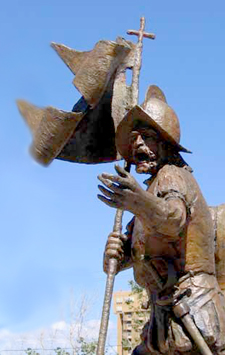
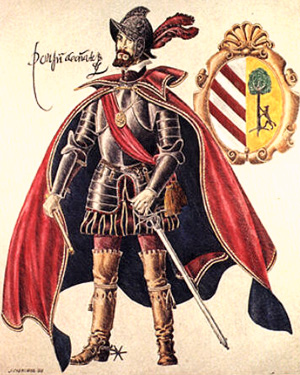
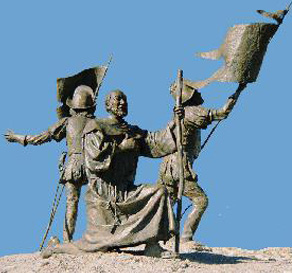
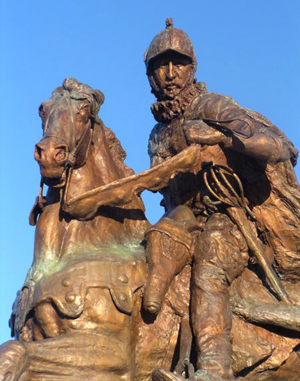
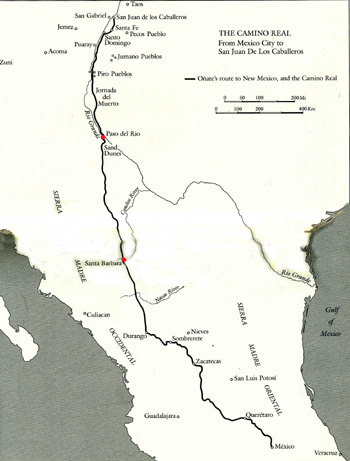
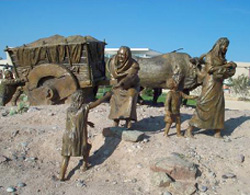



 Citar
Citar








Marcadores